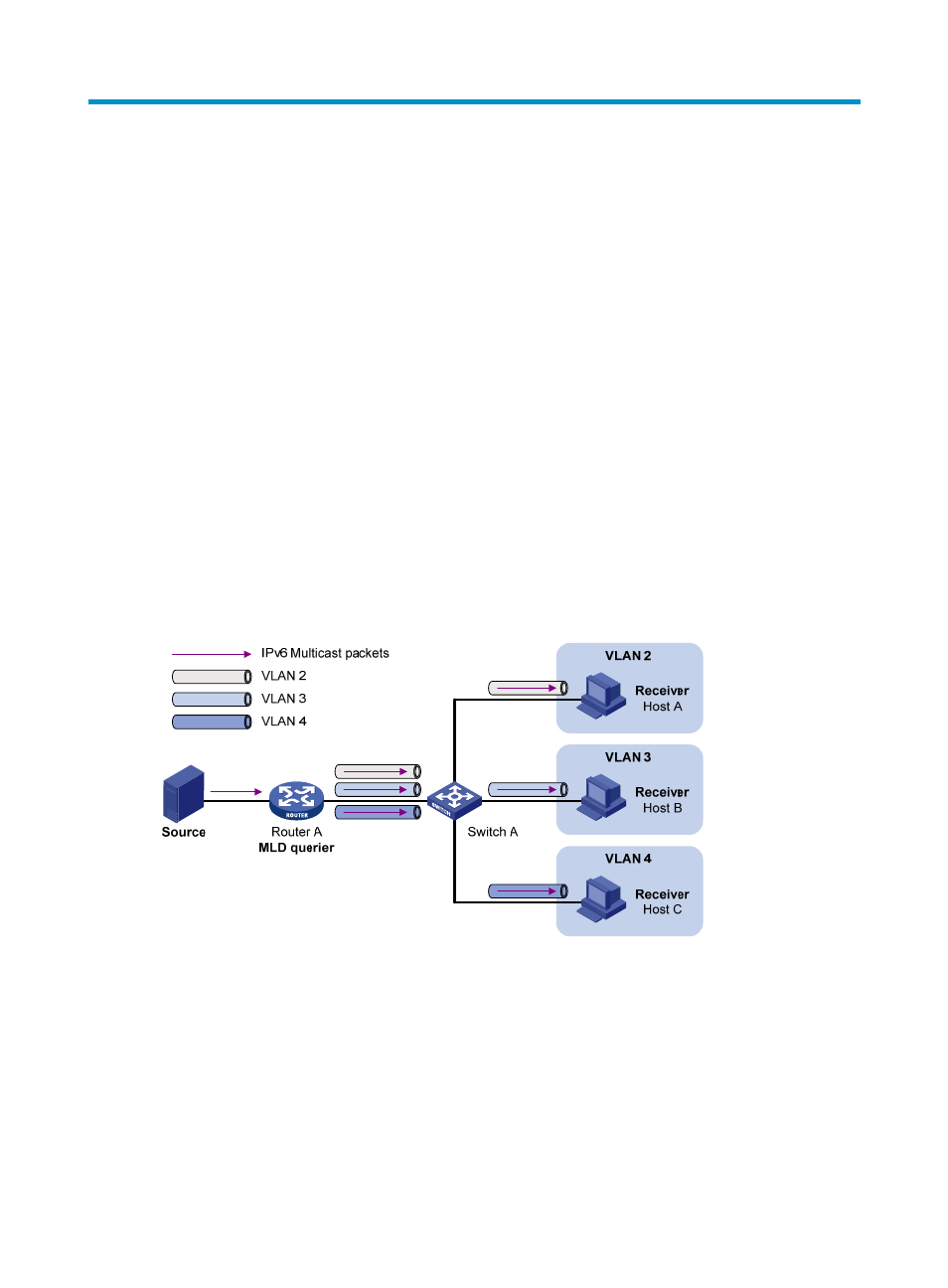Introduction to ipv6 multicast vlan, Port-based ipv6 multicast vlan – H3C Technologies H3C S3100V2 Series Switches User Manual
Page 104

96
IPv6 multicast VLAN configuration(available
only on the S3100V2-EI)
This chapter includes these sections:
•
Introduction to IPv6 multicast VLAN
•
IPv6 multicast VLAN configuration task list
•
Configuring port-based IPv6 multicast VLAN
•
Displaying and maintaining IPv6 multicast VLAN
•
IPv6 multicast VLAN configuration examples
Introduction to IPv6 multicast VLAN
As shown in
, in the traditional IPv6 multicast programs-on-demand mode, when hosts—Host A,
Host B, and Host C—which belong to different VLANs require IPv6 multicast programs-on-demand
service, the Layer 3 device—Router A—must forward a separate copy of the multicast traffic in each user
VLAN to the Layer 2 device, Switch A. This results in not only waste of network bandwidth but also extra
burden on the Layer 3 device.
Figure 29 Multicast transmission without IPv6 multicast VLAN
The IPv6 multicast VLAN feature configured on the Layer 2 device is the solution to this issue. With the
IPv6 multicast VLAN feature, the Layer 3 device needs to replicate the multicast traffic only in the IPv6
multicast VLAN instead of making a separate copy of the multicast traffic in each user VLAN. This saves
network bandwidth and lessens the burden on the Layer 3 device.
The IPv6 multicast VLAN feature can be implemented by the following approaches:
Port-based IPv6 multicast VLAN
As shown in
, Host A, Host B and Host C are in three different user VLANs. All the user ports
are hybrid ports. On Switch A, configure VLAN 10 as an IPv6 multicast VLAN, assign all user ports to this
IPv6 multicast VLAN, and enable MLD snooping in the IPv6 multicast VLAN and all user VLANs.